Inverness South is one of the 21 wards used to elect members of the Highland Council. It includes Cradlehall, Inshes and Westhill areas in or near urban Inverness, and the village of Tomatin, on the River Findhorn. It elects four Councillors.
Inverness South is one of the 21 wards used to elect members of the Highland Council. It includes Cradlehall, Inshes and Westhill areas in or near urban Inverness, and the village of Tomatin, on the River Findhorn. It elects four Councillors.
| Election | Councillors | |||||||
|---|---|---|---|---|---|---|---|---|
| 2007 | Roy Pedersen (SNP) | Thomas Prag (Liberal Democrats) | John Holden (Labour) | Jim Crawford (Ind.) | ||||
| Nov 2011 | Carolyn Ann Caddick (Liberal Democrats) | |||||||
| 2012 | Ken Gowans (SNP) | |||||||
| 2017 | Andrew Jarvie (Conservative) | Duncan MacPherson (Ind.) | ||||||
| 2022 | Andrew Sinclair (Conservative) | Colin Aitken (Liberal Democrats) | ||||||
| Apr 2024 | Duncan McDonald (Ind.) | |||||||
| Party | Candidate | FPv% | Count | ||||||||
|---|---|---|---|---|---|---|---|---|---|---|---|
| 1 | 2 | 3 | 4 | 5 | 6 | 7 | 8 | ||||
| Independent | Duncan Cameron McDonald | 21.9 | 730 | 740 | 768 | 798 | 872 | 1,050 | 1,247 | 1,800 | |
| Liberal Democrats | Jonathan Chartier | 19.6 | 652 | 658 | 665 | 699 | 834 | 1,065 | 1,235 | ||
| SNP | Gordon Shanks | 19.2 | 641 | 647 | 679 | 778 | 830 | 838 | |||
| Conservative | Ryan Forbes | 16.0 | 533 | 535 | 541 | 551 | 595 | ||||
| Labour | Ron Stevenson | 10.9 | 364 | 365 | 370 | 404 | |||||
| Scottish Green | Arun Sharma | 7.1 | 237 | 237 | 246 | ||||||
| Alba | Jimmy Duncan | 3.2 | 107 | 112 | |||||||
| Sovereignty | Andrew Macdonald | 1.2 | 41 | ||||||||
| Electorate: 12,664 Valid: 3,305 Spoilt: 20 Quota: 1,653 Turnout: 26.3% | |||||||||||
| Party | Candidate | FPv% | Count | ||||||
|---|---|---|---|---|---|---|---|---|---|
| 1 | 2 | 3 | 4 | 5 | 6 | ||||
| SNP | Ken Gowans (incumbent) | 35.2 | 1,949 | ||||||
| Independent | Duncan MacPherson (incumbent) | 24.8 | 1,375 | ||||||
| Conservative | Andrew Sinclair [note 1] | 16.9 | 936 | 949 | 1,007 | 1,017 | 1,073 | 1,096 | |
| Liberal Democrats | Colin Aitken [note 2] | 8.6 | 478 | 550 | 618 | 640 | 868 | 1,228 | |
| Labour | David Jardine | 7.2 | 402 | 502 | 536 | 557 | |||
| Scottish Green | Claire Filer | 5.4 | 299 | 597 | 628 | 724 | 841 | ||
| Alba | Jimmy Duncan | 1.9 | 104 | 216 | 225 | ||||
| Electorate: 12,571 Valid: 5,543 Spoilt: 37 Quota: 1,109 Turnout: 44.4% | |||||||||
2017 Highland Council election [6]
| Party | Candidate | FPv% | Count | |||||||
|---|---|---|---|---|---|---|---|---|---|---|
| 1 | 2 | 3 | 4 | 5 | 6 | 7 | ||||
| SNP | Ken Gowans (incumbent) †† | 25.3% | 1,287 | |||||||
| Conservative | Andrew Jarvie | 20.1% | 1,022 | |||||||
| Liberal Democrats | Carolyn Caddick (incumbent) | 15.7% | 799 | 810.5 | 811.6 | 833.8 | 970.5 | 1,151.2 | ||
| Independent | Duncan MacPherson | 11.5% | 583 | 593.7 | 594.3 | 619.6 | 678.2 | 971.2 | 1,029.6 | |
| Independent | Jim Crawford (incumbent) | 10.4% | 527 | 537.5 | 538.3 | 564.3 | 621.8 | |||
| Labour | Shaun Fraser | 7.6% | 387 | 394.9 | 395.3 | 401.3 | ||||
| SNP | Michelle Gowans | 7.4% | 376 | 592.3 | 592.4 | 599.6 | 646.4 | 682.2 | 696.4 | |
| Scottish Christian | Donald MacLeod Boyd | 2.05% | 104 | 105.05 | 105.3 | |||||
| Electorate: TBC Valid: 5,085 Spoilt: 48 Quota: 1,018 Turnout: 5,133 (45.3%) | ||||||||||
2012 Highland Council election
| Party | Candidate | FPv% | Count | ||||||||
|---|---|---|---|---|---|---|---|---|---|---|---|
| 1 | 2 | 3 | 4 | 5 | 6 | 7 | 8 | ||||
| SNP | Ken Gowans | 20.34% | 696 | ||||||||
| Independent | Jim Crawford (incumbent) | 17.36% | 594 | 594.5 | 659.5 | 772.5 | |||||
| Liberal Democrats | Carolyn Caddick (incumbent) | 16.63% | 569 | 569.6 | 590.7 | 688.7 | |||||
| SNP | Bill Boyd | 11.49% | 393 | 401.3 | 411.3 | 429.4 | 437.9 | 438.2 | 495.6 | ||
| Labour | Katherine MacKenzie | 10.32% | 353 | 353.3 | 363.3 | 385.3 | 398.8 | 399.1 | |||
| Liberal Democrats | Thomas Prag (incumbent) | 9.79% | 335 | 335.2 | 346.2 | 378.2 | 401.4 | 403.9 | 505.3 | 631.9 | |
| Conservative | David Bonsor | 9.38% | 321 | 321.1 | 343.1 | ||||||
| Scottish Christian | Donald MacLeod Boyd | 4.68% | 160 | 160.1 | |||||||
| Electorate: 9,479 Valid: 3,421 Spoilt: 37 Quota: 685 Turnout: 3,458 (36.48%) | |||||||||||
| Party | Candidate | FPv% | Count | ||||||
|---|---|---|---|---|---|---|---|---|---|
| 1 | 2 | 3 | 4 | 5 | 6 | ||||
| SNP | Kenneth Archer Gowans | 33.94 | 885 | 903 | 922 | 967 | 1,005 | 1,084 | |
| Liberal Democrats | Carolyn Ann Caddick | 28.65 | 747 | 761 | 777 | 830 | 971 | 1,091 | |
| Labour | Katherine MacKenzie-Geegan | 11.81 | 308 | 319 | 327 | 357 | 379 | ||
| Conservative | David Louis Kinsley Bonsor | 11.12 | 290 | 300 | 336 | 339 | |||
| Scottish Green | Gale Louise Falconer | 6.02 | 157 | 172 | 189 | ||||
| Scottish Christian | Donald MacLeod Boyd | 4.83 | 126 | 130 | |||||
| Independent | David McGrath | 3.60 | 94 | ||||||
| Electorate: 9,760 Valid: 2,607 Spoilt: 13 Quota: 1,304 Turnout: 2,620 | |||||||||
2007 Highland Council election
| Party | Candidate | FPv% | % | Seat | Count | |
|---|---|---|---|---|---|---|
| SNP | Roy Pedersen | 1,058 | 27.0 | 1 | 1 | |
| Liberal Democrats | Thomas Prag | 902 | 23.0 | 2 | 1 | |
| Labour | John Holden | 671 | 17.1 | 4 | 4 | |
| Independent | Jim Crawford | 524 | 13.4 | 3 | 4 | |
| Conservative | Donald MacDonald | 413 | 10.5 | |||
| Independent | Barrie Haycock | 353 | 9.0 | |||
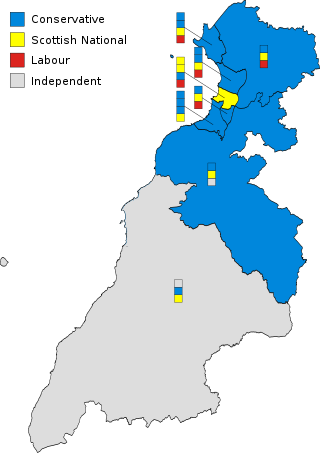
The 2017 South Ayrshire Council election took place on 4 May 2017 on the same day as the 31 other Scottish local government elections. As with other Scottish council elections, it was held using single transferable vote (STV) – a form of proportional representation – in which multiple candidates are elected in each ward and voters rank candidates in order of preference.
Elections to North Ayrshire Council took place on 4 May 2017 on the same day as the 31 other Scottish local government elections.

Cromarty Firth is one of the 21 wards used to elect members of the Highland Council. It consists of North of the Cromarty Firth, west of the Tain and Easter Ross ward

North, West and Central Sutherland is one of the 21 wards used to elect members of the Highland Council. It includes the towns and villages of Altnaharra, Ardgay, Bettyhill, Bonar Bridge, Durness, Lairg, Lochinver and Tongue. With Lairg and Bonar being the most populated settlements in the area. It elects three Councillors.

Tain and Easter Ross is one of the 21 wards used to elect members of the Highland Council. Between the Cromarty Firth and the Dornoch Firth and east of the Cromarty Firth ward, it includes the town of Tain and the Seaboard Villages. It elects three Councillors.

Aird and Loch Ness is one of the 21 wards used to elect members of the Highland Council. It includes Loch Ness, the town of Beauly, and the village of Fort Augustus. It elects four Councillors.

Culloden and Ardersier is one of the 21 wards used to elect members of the Highland Council. It includes the villages of Culloden, Ardersier and Smithton. It elects three Councillors.

Inverness Central is one of the 21 wards used to elect members of the Highland Council. It includes Dalneigh, Glebe, Haugh, Merkinch and South Kessock areas of urban Inverness. It elects four Councillors.
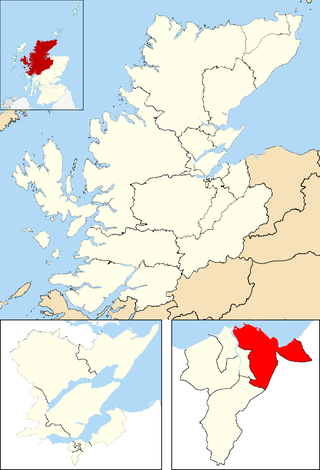
Inverness Millburn is one of the 21 wards used to elect members of the Highland Council. It includes Millburn, Culcabock, Longman and Raigmore areas of urban Inverness. It elects three Councillors.
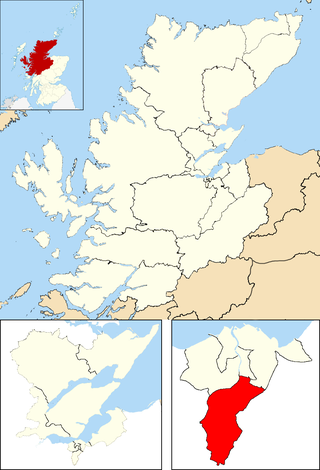
Inverness Ness-side is one of the 21 wards used to elect members of the Highland Council. It includes Drummond, Hilton and Lochardil areas of Inverness, and a more rural area, east of the River Ness. It elects three Councillors.
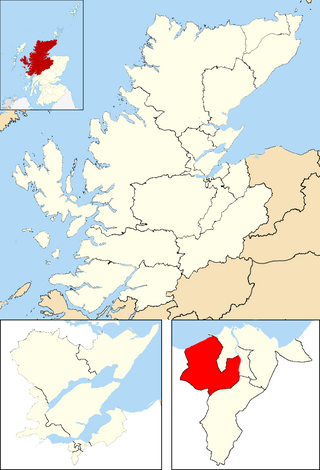
Inverness West is one of the 21 wards used to elect members of the Highland Council. It includes Kinmylies and Scorguie areas of urban Inverness, and a more rural area, west of the River Ness. It elects three Councillors.
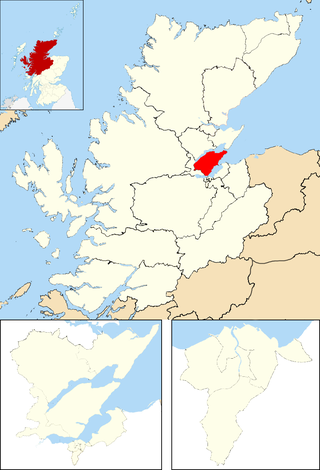
Black Isle is one of the 21 wards used to elect members of the Highland Council. It includes the towns of Cromarty and Fortrose. It elects three Councillors.
Wick and East Caithness is one of the 21 wards used to elect members of the Highland Council. This was a new ward in the 2017 election following boundary changes. It elects four Councillors.
Thurso and North West Caithness is one of the 21 wards used to elect members of the Highland Council. This was a new ward in the 2017 election following boundary changes. It elects four Councillors.
Elections to The Highland Council were held on 5 May 2022, the same day as the 31 other Scottish local government elections. As with other Scottish council elections, it was held using single transferable vote (STV) – a form of proportional representation – in which multiple candidates are elected in each ward and voters rank candidates in order of preference.

Elections to Shetland Islands Council took place on 5 May 2022 on the same day as the 31 other Scottish local government elections. As with other Scottish council elections, it was held using single transferable vote (STV) – a form of proportional representation – in which multiple candidates are elected in each ward and voters rank candidates in order of preference.
Elections to North Ayrshire Council took place on 5 May 2022 on the same day as the 31 other Scottish local government elections. As with other Scottish council elections, it was held using single transferable vote (STV) – a form of proportional representation – in which multiple candidates are elected in each ward and voters rank candidates in order of preference.

Elections to Argyll and Bute Council took place on 5 May 2022, the same day as the 31 other Scottish local government elections. As with other Scottish council elections, it was held using single transferable vote (STV)—a form of proportional representation—in which multiple candidates are elected in each ward and voters rank candidates in order of preference. New ward boundaries were proposed by Boundaries Scotland in 2021, which would have reduced the total number of councillors to 34. However, these were rejected by the Scottish Parliament and the boundaries used at the previous election remained in place.

Elections to Fife Council took place on 5 May 2022 on the same day as the 31 other Scottish local government elections. As with other Scottish council elections, it was held using single transferable vote (STV) – a form of proportional representation – in which multiple candidates are elected in each ward and voters rank candidates in order of preference.
Elections to North Lanarkshire Council took place on 5 May 2022 on the same day as the 31 other Scottish local government elections. As with other Scottish council elections, it was held using single transferable vote (STV) – a form of proportional representation – in which multiple candidates are elected in each ward and voters rank candidates in order of preference.